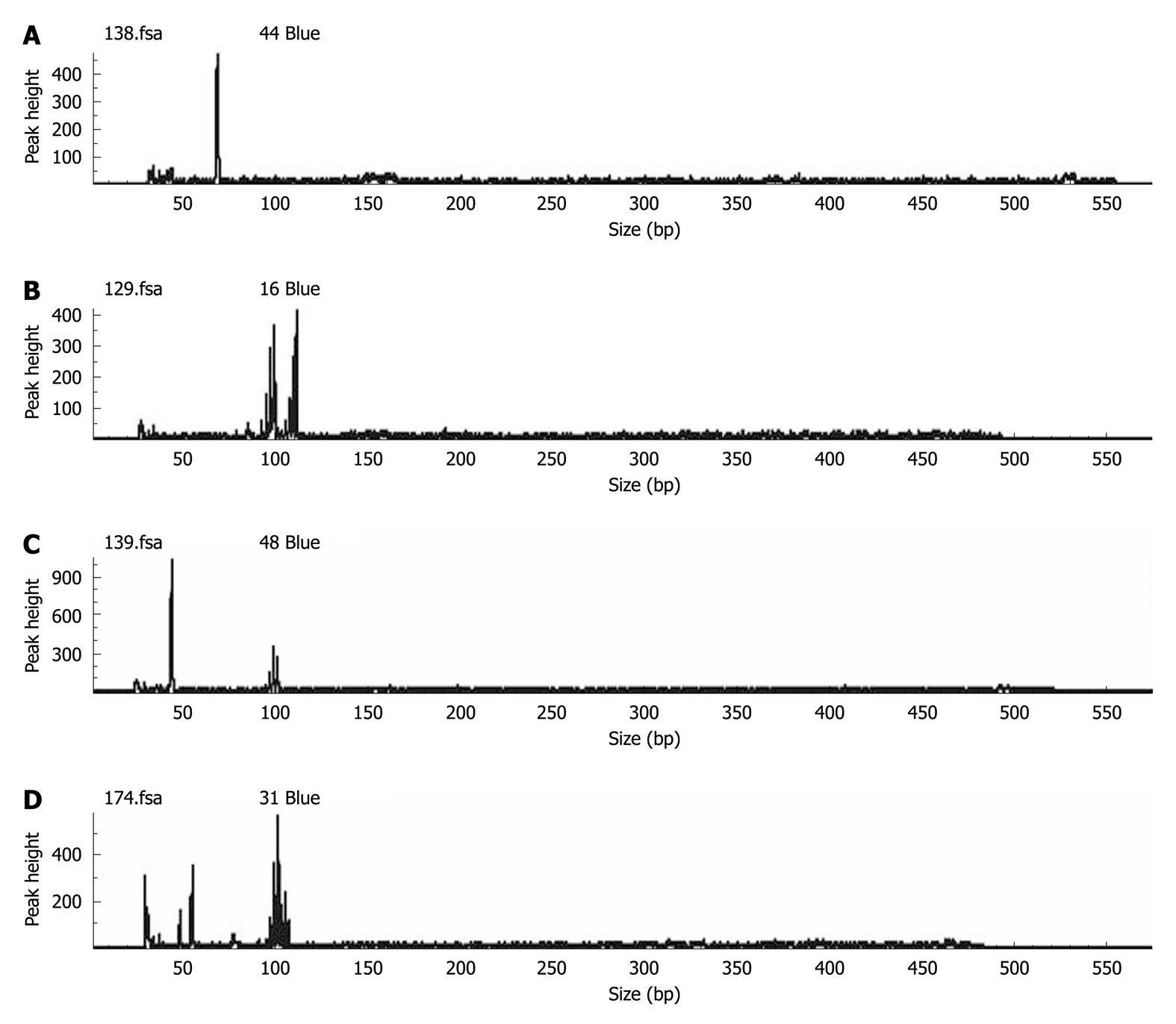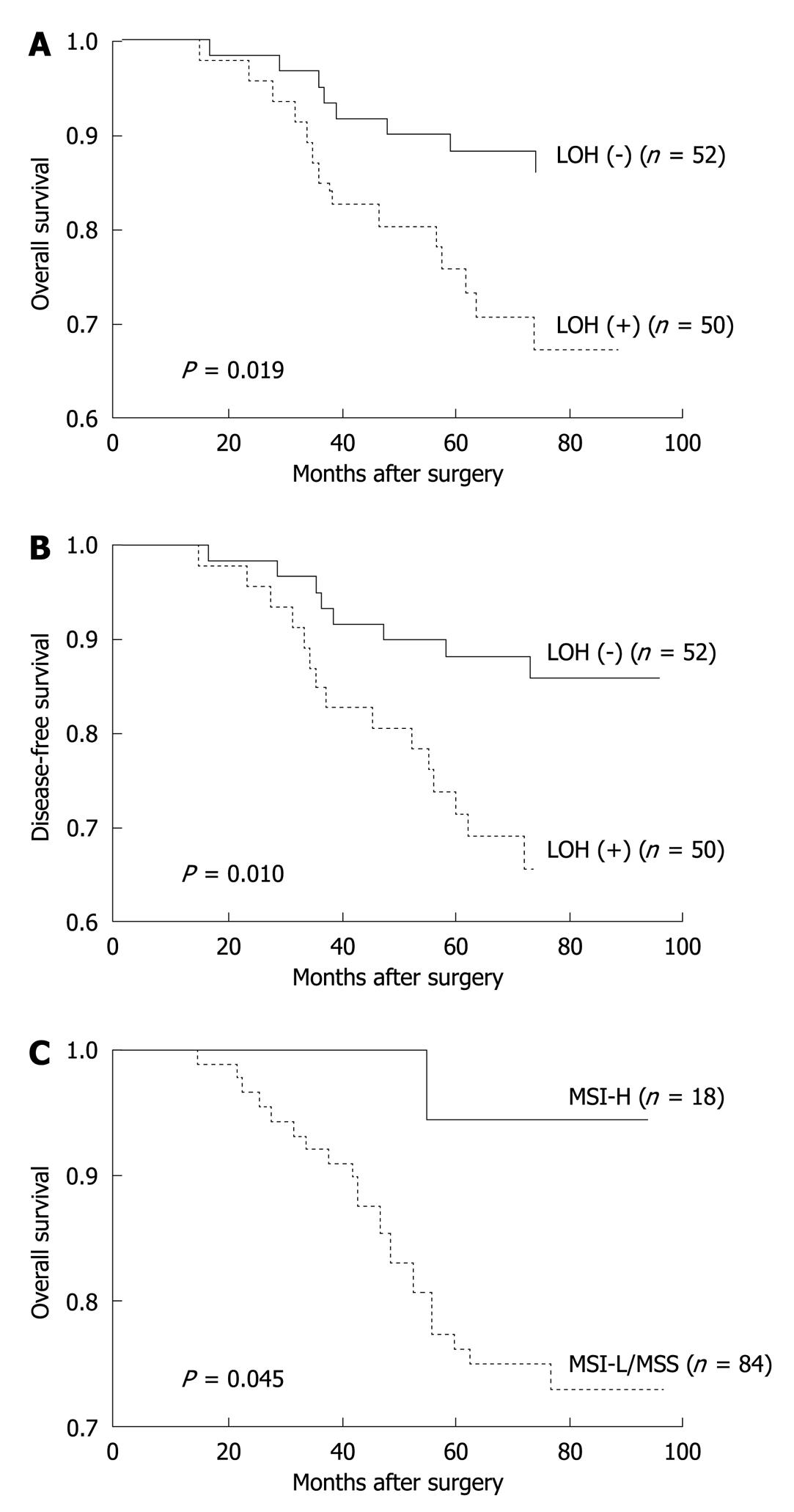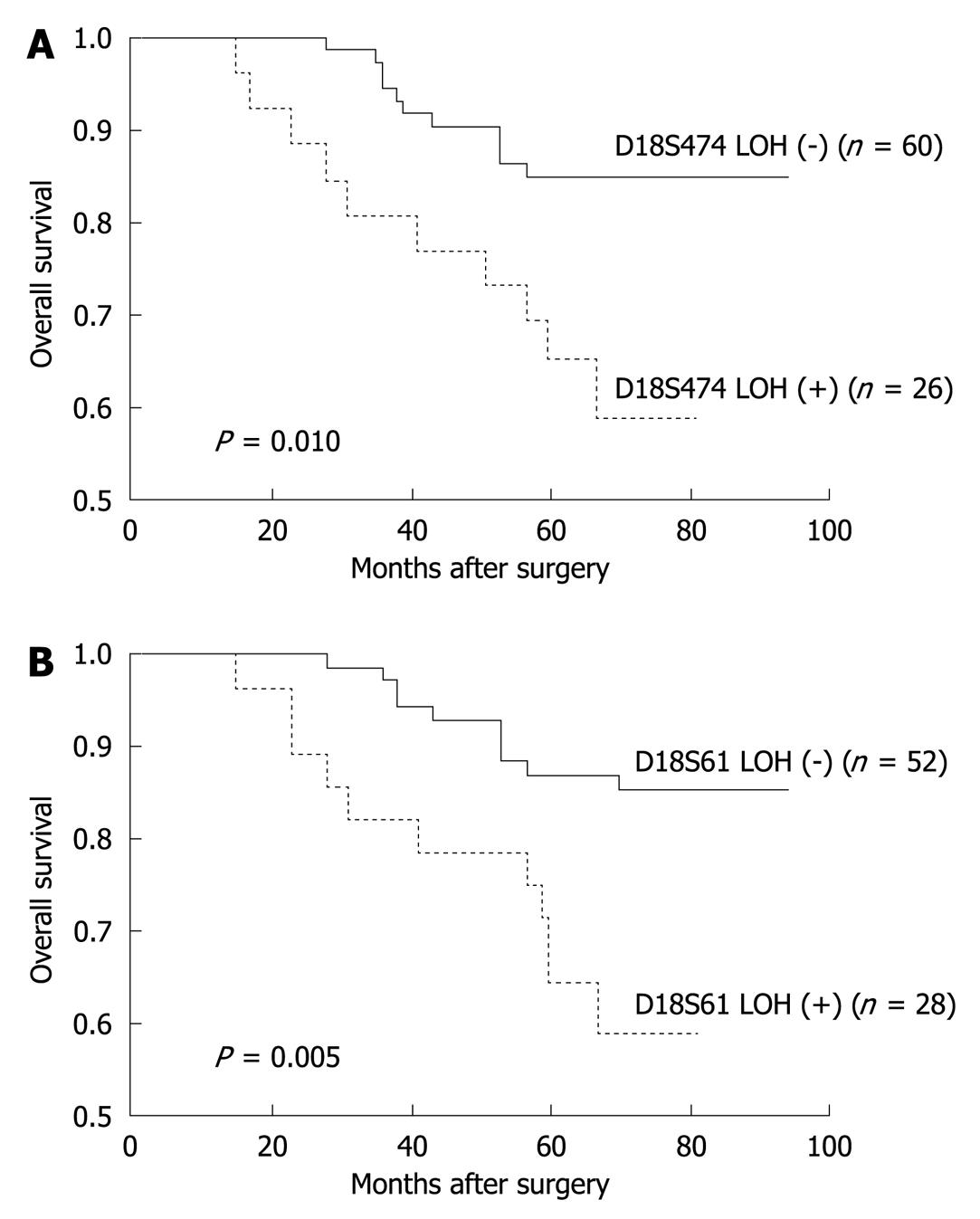Copyright
©2010 Baishideng Publishing Group Co.
World J Gastroenterol. Dec 21, 2010; 16(47): 6026-6034
Published online Dec 21, 2010. doi: 10.3748/wjg.v16.i47.6026
Published online Dec 21, 2010. doi: 10.3748/wjg.v16.i47.6026
Figure 1 Representative examples showing homozygosity and heterozygosity in normal tissues and loss of heterozygosity and microsatellite instability in tumor tissues.
A: Normal sample shows homozygosity; B: Normal sample shows heterozygosity; C: Tumor sample shows loss of heterozygosity; D: Tumor sample shows microsatellite instability.
Figure 2 Kaplan-Meier estimates of overall survival and disease-free survival among patients with stage II colon cancer according to microsatellite alteration.
In our study, 18qLOH was significantly associated with reduced 5-year overall survival (P = 0.019) (A) and disease-free survival (P = 0.010) (B). High levels of microsatellite instability was moderately associated with improved 5-year overall survival during the follow-up period (P = 0.045) (C). LOH: Loss of heterozygosity; MSI-L: Low frequency microsatellite instability; MSI-H: High frequency of microsatellite instability; MSS: Microsatellite stable.
Figure 3 Kaplan-Meier estimates of overall survival among patients with stage II colon cancer at microsatellite loci, D18S474 and D18S61.
When the status of chromosome 18q was evaluated according to each microsatellite loci, the D18S474 (A) and D18S61 (B) loci were associated with worse 5-year overall survival (P = 0.010 and 0.005, respectively). LOH: Loss of heterozygosity.
- Citation: Wang W, Wang GQ, Sun XW, Chen G, Li YF, Zhang LY, Qiu HB, Huang CY, Zhan YQ, Zhou ZW. Prognostic values of chromosome 18q microsatellite alterations in stage II colonic carcinoma. World J Gastroenterol 2010; 16(47): 6026-6034
- URL: https://www.wjgnet.com/1007-9327/full/v16/i47/6026.htm
- DOI: https://dx.doi.org/10.3748/wjg.v16.i47.6026















